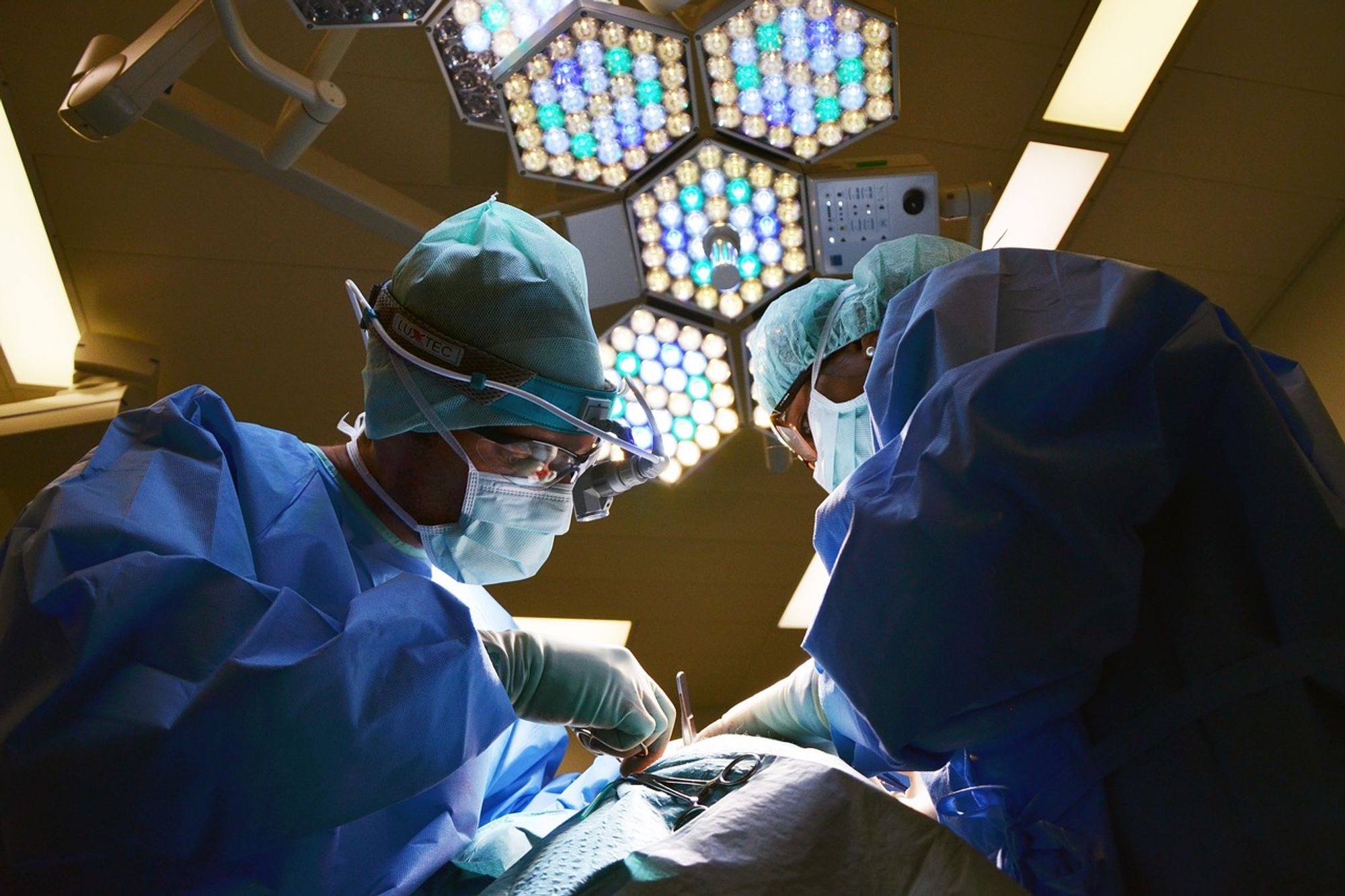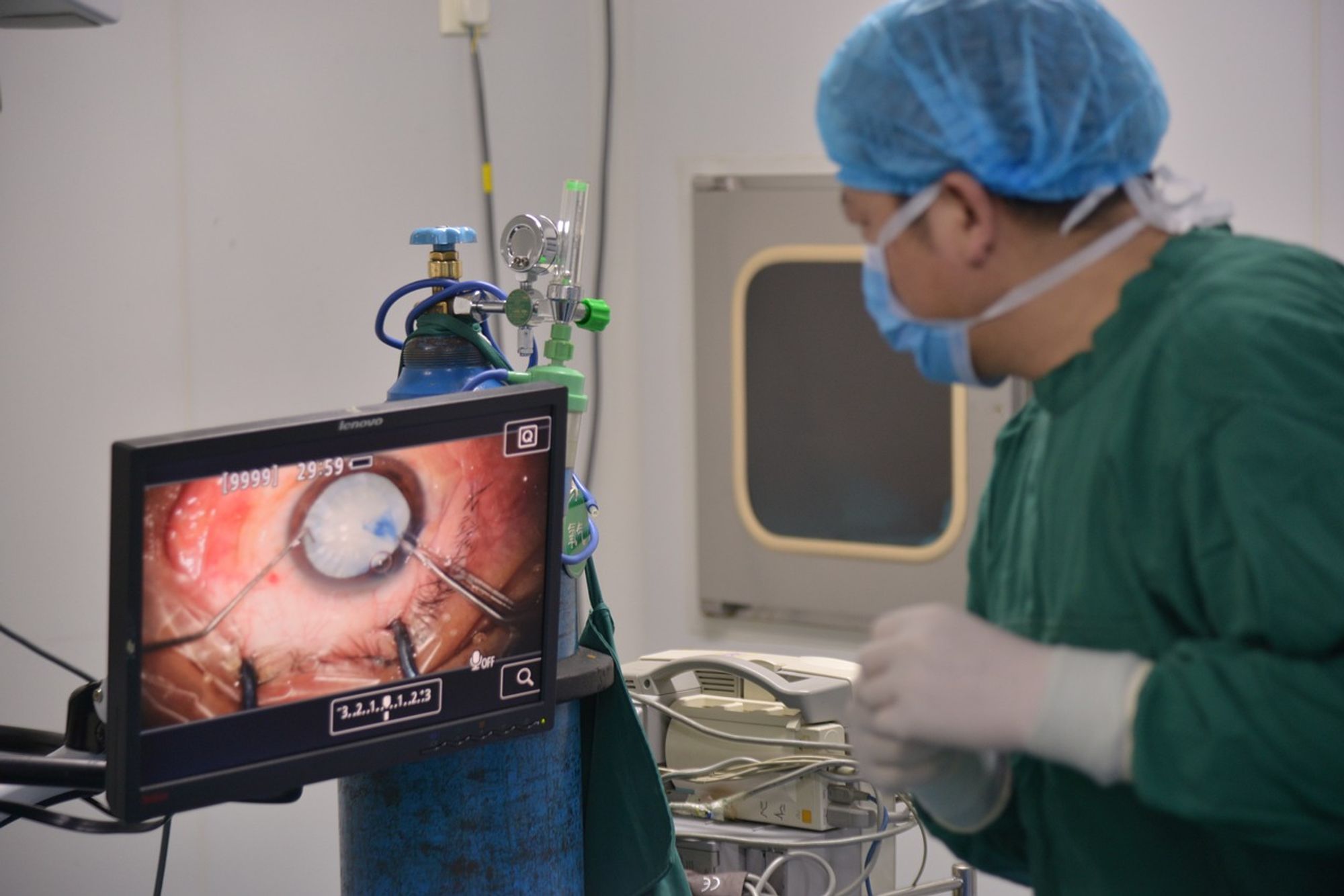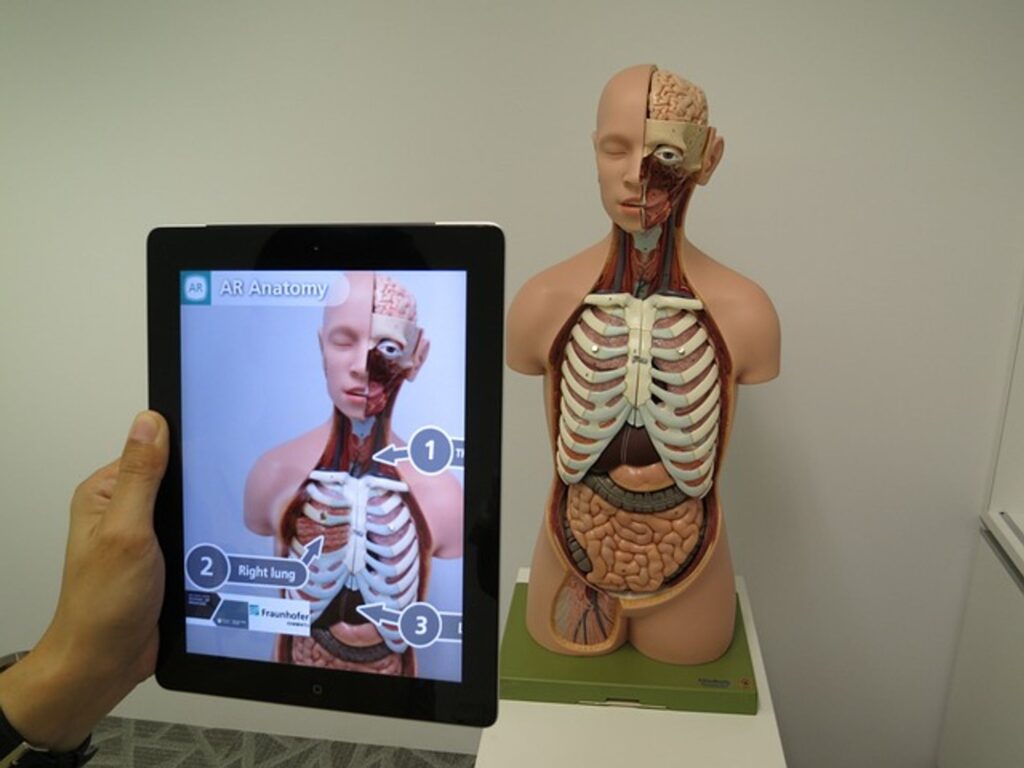The potential to revolutionize surgical practices
I will admit that when Pokémon Go was introduced in 2016, I was a little annoyed. Everywhere I went, people were bumping into me, paying attention only to their screens, trying to “catch ’em all.” My ire might have been short-sighted, considering the descendants of the same augmented reality technology may well save my life in the near future.
As it stands now, AR looks like it’s about to revolutionize the field of surgery, offering unprecedented precision, visualization, and efficiency. By integrating digital information with the real-world environment, this cutting-edge technology is transforming the way surgeons approach complex procedures, ultimately enhancing patient safety and outcomes. (1)
Dr. Shafi Ahmed, a pioneering cancer surgeon, states, “Augmented reality will be a foundational technology for surgery in the coming years, enabling a digitally immersive hybrid surgical environment that seamlessly blends the virtual and physical worlds.” (2)

Training and Simulation: A Game-Changer
Traditionally, surgical training has relied heavily on cadavers, animal models, and textbook illustrations, which often fail to capture the nuances and complexities of the human body. AR simulation, however, provides trainees with an immersive and interactive learning experience that closely mimics real-life surgical scenarios in a highly realistic, immersive environment without putting patients at risk.
By visualizing and interacting with 3D anatomical models, trainees can hone their skills, practice intricate techniques, and receive real-time feedback, ultimately improving their confidence and proficiency. (3)
Dr. Rajesh Aggarwal, Director of the Harvard AR/VR in Education Program, emphasizes the transformative potential of AR simulation, stating, “AR simulation allows trainees to experience realistic scenarios and develop skills in a safe, controlled environment before ever touching a patient. It’s transforming how we train the next generation of surgeons.” (4)
Through AR simulations, trainees can practice intricate procedures on virtual patients, encountering various anatomical variations and complications that they may encounter in the operating room. This exposure to diverse scenarios helps trainees develop critical thinking skills and decision-making abilities, better preparing them for the challenges they will face as practicing surgeons.

Enhanced Visualization and Guidance: A Surgeon’s Augmented Reality
During live surgical procedures, AR technology can overlay critical patient data, such as CT scans, MRI images, and vital signs, directly onto the surgeon’s field of view. This real-time visualization of anatomical structures and patient information enhances the surgeon’s situational awareness, enabling more precise and informed decision-making. (5)
As Dr. Nassir Navab, Professor of Computer Aided Medical Procedures at Technical University of Munich, explains, “By projecting a patient’s imaging data directly onto the surgical field, AR provides real-time guidance that enhances a surgeon’s ability to navigate complex anatomical structures with improved accuracy and confidence.” (6)
Remote Collaboration and Consultation: Breaking Geographical Barriers
AR technology facilitates remote collaboration and consultation among surgeons, allowing experts from around the world to virtually participate in complex procedures. Through shared AR experiences, surgeons can receive guidance, advice, and second opinions from colleagues in real-time, improving patient outcomes and fostering knowledge sharing on a global scale. (2)
“AR technology is breaking down geographical barriers, allowing surgeons from around the world to virtually scrub in and provide expertise during complex procedures. This global collaboration will undoubtedly improve patient outcomes.” (7)

Minimally Invasive Procedures: A New Level of Precision
Minimally invasive surgeries, such as laparoscopic or robotic procedures, offer patients faster recovery times, reduced scarring, and lower risk of complications. However, these procedures also present unique challenges for surgeons, as their field of view is restricted by the small incisions and the limitations of traditional endoscopic cameras. (8)
By providing an augmented view of the surgical site, AR can help surgeons navigate intricate anatomical structures, identify critical structures, and perform procedures with greater precision and confidence.
As Dr. Antonio Criminisi, an AR researcher at Microsoft, explains, “The integration of AR into minimally invasive surgery is a game-changer. It provides an augmented view that allows surgeons to ‘see through’ tissue and visualize critical structures, enabling safer and more precise procedures.” (9)
Challenges and Considerations: Addressing Potential Risks
Dr. Justin Barad, a biomedical engineer at Osso VR, emphasizes the importance of proper protocols and training, stating, “While AR holds immense promise, we must address potential risks such as data privacy, technological limitations, and overreliance on the technology. Proper protocols and training are essential for safe and effective implementation.” (10)
As with any new technology, the integration of AR into surgical workflows raises concerns about data privacy and security. The use of patient imaging data and medical records in AR applications necessitates robust cybersecurity measures to protect sensitive information from unauthorized access or breaches. (11)
Additionally, technological limitations, such as limited field of view and resolution, can potentially hinder the effectiveness of AR in surgical settings. While AR technology continues to advance rapidly, there may be instances where the virtual overlays or visualizations are not as clear or accurate as desired, potentially leading to errors or misinterpretations. (12)
Furthermore, there is a risk of over-reliance on AR technology, which could lead to a diminished focus on traditional surgical skills and techniques. Surgeons must maintain a balance between leveraging the benefits of AR and ensuring that their fundamental surgical abilities remain sharp and adaptable to various situations. (10)

A New Era of Precision and Innovation
The integration of augmented reality into the field of surgery offers unprecedented opportunities for improved patient outcomes, enhanced surgical training, and global collaboration. As technology continues to evolve and overcome challenges, AR may revolutionize the operating room, ushering in a new era of precision, efficiency, and innovation in healthcare. Its impact on the medical field will be felt for generations to come. (1-12)
So, on the off chance that I wind up on one of these operating tables, with a precise map of my insides neatly laid out so that my surgeons might better navigate them in an ongoing attempt to help me live forever, let me say this: Sorry, Pokémon, for all the cursing I did in 2016.

DKMD Consulting: Your Handy Partner for Medical Writing
As augmented reality and healthcare become increasingly intertwined, staying informed and engaged with the latest developments becomes increasingly important. DKMD Consulting is your trusted resource in this arena, offering insights, updates, and analyses that keep you at the forefront of AR advancements in surgery.
By following our blog, where we discuss similar topics like how AR is revolutionizing medical education, and our social media channels, you position yourself to witness and actively participate in the ongoing dialogue shaping the future of augmented reality in healthcare.
Together, let’s embrace the opportunities AR presents, steering its application towards outcomes that benefit all, underpinned by an unwavering commitment to patient safety, ethical practices, and excellence in healthcare. Stay connected with DKMD Consulting to navigate the evolving landscape of augmented reality in surgery and be part of shaping a future where cutting-edge technology and human health harmonize for the greater good.
References
Riva G, Wiederhold BK, Gaggioli A. Being present in virtual reality. Annu Rev Cybertherapy Telemed. 2018;16:3-16.
Pottle J. Virtual reality and the transformation of medical education. Future Healthc J. 2019;6(3):181-185.
Qian L, Deguet A, Kazanzides P. Augmented reality assisted robot surgery: A systematic review of recent research. Robot Comput Integr Manuf. 2022;73:102245.
Eckert M, Volmerg JS, Friedrich CM. Augmented Reality in Medicine: Systematic and Bibliometric Review. JMIR Mhealth Uhealth. 2019;7(4):e10967.
Riva G, Wiederhold BK, Gaggioli A. Being present in virtual reality. Annu Rev Cybertherapy Telmed. 2018;16:3-16.
Qian L, Deguet A, Kazanzides P. Augmented reality assisted robot surgery: A systematic review of recent research. Robot Comput Integr Manuf. 2022;73:102245.
Pottle J. Virtual reality and the transformation of medical education. Future Healthc J. 2019;6(3):181-185.
Eckert M, Volmerg JS, Friedrich CM. Augmented Reality in Medicine: Systematic and Bibliometric Review. JMIR Mhealth Uhealth. 2019;7(4):e10967.
Riva G, Wiederhold BK, Gaggioli A. Being present in virtual reality. Annu Rev Cybertherapy Telmed. 2018;16:3-16.
Pottle J. Virtual reality and the transformation of medical education. Future Healthc J. 2019;6(3):181-185.
Qian L, Deguet A, Kazanzides P. Augmented reality assisted robot surgery: A systematic review of recent research. Robot Comput Integr Manuf. 2022;73:102245.
Eckert M, Volmerg JS, Friedrich CM. Augmented Reality in Medicine: Systematic and Bibliometric Review. JMIR Mhealth Uhealth. 2019;7(4):e10967.





